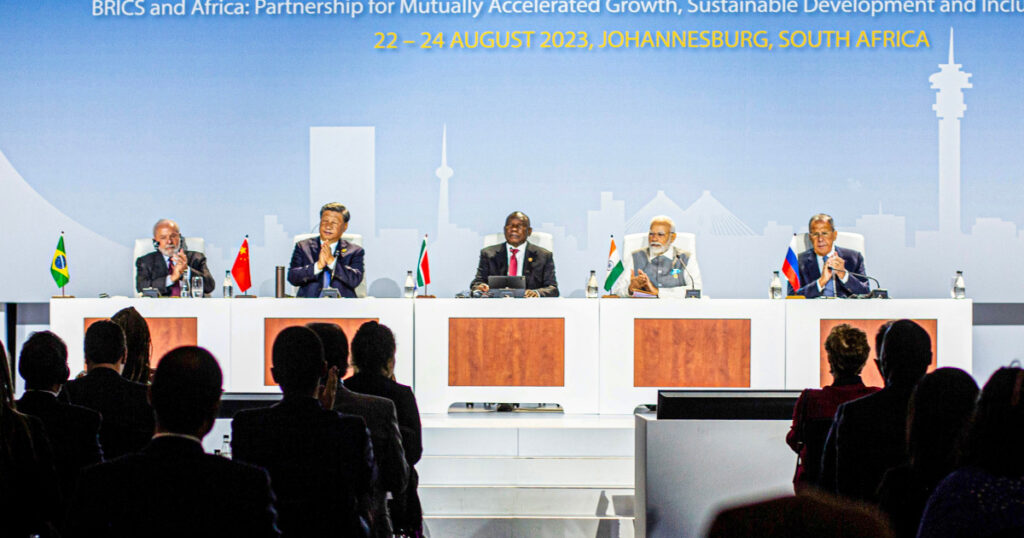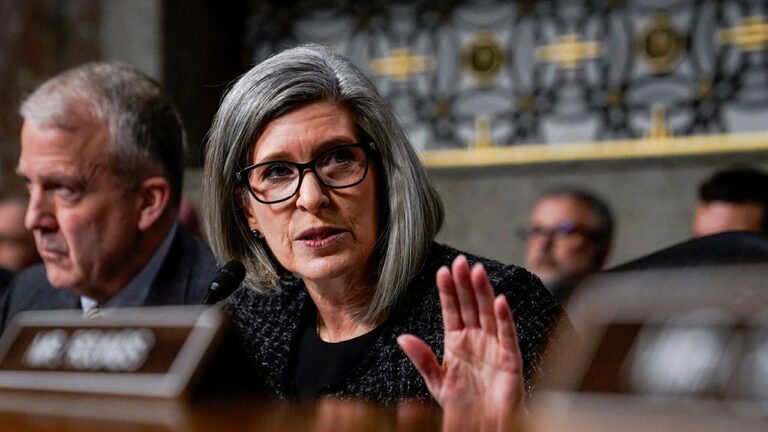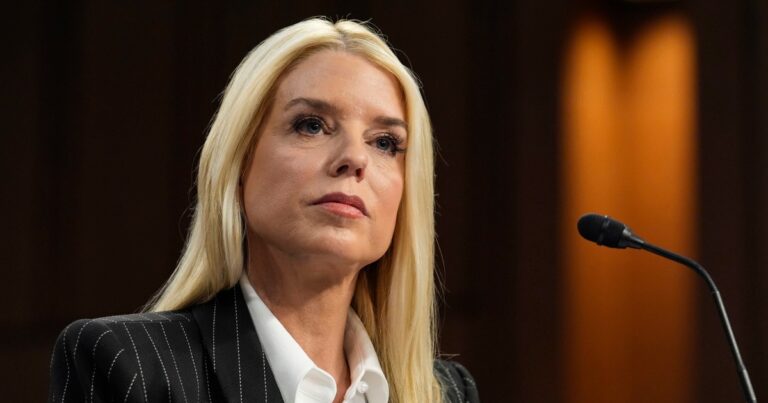In a post on Truth Social Saturday, President-elect Donald Trump said he would impose a 100% tariff on the BRICS geopolitical coalition of non-Western countries if the group moves away from trading using the U.S. dollar.
“The idea that the BRICS Countries are trying to move away from the Dollar while we stand by and watch is OVER,” Trump wrote. “We require a commitment from these Countries that they will neither create a new BRICS Currency, nor back any other Currency to replace the mighty U.S. Dollar or, they will face 100% Tariffs, and should expect to say goodbye to selling into the wonderful U.S. Economy.”
“They can go find another ‘sucker!’ There is no chance that the BRICS will replace the U.S. Dollar in International Trade, and any Country that tries should wave goodbye to America,” the president-elect added.
The BRICS alliance is a coalition of non-Western countries that convened for the first official BRIC summit in 2009, with Brazil, Russia, India and China joining the informal group. South Africa joined a year later, cementing the BRICS name.
At a 2023 summit, the group expanded for the first time in over a decade, inviting Egypt, Ethiopia, Iran, Saudi Arabia and the United Arab Emirates.
At the same summit, the issue of “de-dollarization,” or reducing the influence of the U.S. dollar in global trade, gained steam, though it’s not a new idea for the group.

Experts are skeptical that BRICS would succeed in creating its own currency for global trade, pointing to infighting between the member nations and major differences in the way the countries run their economies and financial institutions.
Still, some members of BRICS are among the United States’ largest trading partners, including India and China.
According to the Office of the U.S. Trade Representative, the United States’ goods-and-services trade with China totaled an estimated $758.4 billion in 2022 and the goods-and-services trade between the U.S. and India totaled an estimated $191.8 billion in 2022.
Representatives for the BRICS countries’ embassies in the U.S. did not immediately respond to requests for comment.
This is Trump’s second time this week threatening to raise tariffs on outside nations.
On Monday, the president-elect wrote in a post on Truth Social that he planned to impose a 25% tariff on products imported from Mexico and Canada. He argued that the purpose of the tariff would be to curb the fentanyl crisis.
In the same post, he threatened to slap a 10% tariff on China, writing, “I have had many talks with China about the massive amounts of drugs, in particular Fentanyl, being sent into the United States — But to no avail. Until such time as they stop, we will be charging China an additional 10% Tariff, above any additional Tariffs, on all of their many products coming into the United States of America.”
On Friday, Canadian Prime Minister Justin Trudeau traveled to West Palm Beach to meet with Trump at his Mar-a-Lago resort.
On Saturday, in a separate social media post, Trump called their conversation “very productive.”
Trump added, “I made it very clear that the United States will no longer sit idly by as our Citizens become victims to the scourge of this Drug Epidemic, caused mainly by the Drug Cartels, and Fentanyl pouring in from China. Too much death and hardship! Prime Minister Trudeau has made a commitment to work with us to end this terrible devastation of U.S. Families.”
In a letter sent to Trump Tuesday, Mexican President Claudia Sheinbaum wrote that “migration and drug consumption in the United States cannot be addressed through threats or tariffs.”
“What is needed is cooperation and mutual understanding to tackle these significant challenges. For every tariff, there will be a response in kind, until we put at risk our shared enterprises,” she added.
Sheinbaum and Trump spoke over the phone on Wednesday, but the conversation spurred a “he said, she said” controversy over whether Sheinbaum had agreed to stop immigration from Mexico into the United States, something Trump alleged she did.
In her own recollection of the conversation, Sheinbaum wrote on X that “I explained to him the comprehensive strategy that Mexico has followed to address the migration phenomenon, respecting human rights. We reiterate that Mexico’s position is not to close borders but instead build bridges between government and people.”













